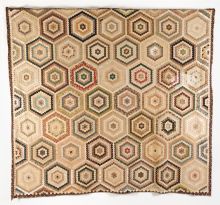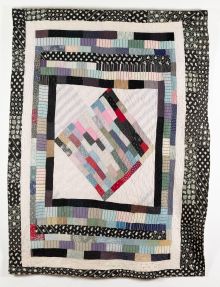Town and Country
26th January - 11th May 2013
Studies of our quilting heritage have revealed that different levels of society make quilts that reflect their social status, fulfil their needs and utilise the materials that they have available to them.
The Town and Country exhibition will showcase and compare the rich, decorative and, often time consuming, creations of ladies of leisure, with the practical quilts made by the working population to fulfil the most basic needs of warmth and comfort in the home.
A star piece at the exhibition promises to be the Ridehalgh quilt (c. 1870s-1900) that is currently undergoing conservation. Made from silks and velvets it comes from ‘Fell Foot’ in the Lake District. This grand house employed a large number of staff, and it was the female servants who made this piece as a present to the owners Colonel C.J.M. Ridehalgh and his wife from the remnants of ball gowns from the ladies of the house.
In sharp contrast is a quilt from Rash Grange Farm in North Yorkshire which is made from printed cottons. The quilt was owned by John Kilburn who used the quilt until 1995. When the owners' cousin discovered that the quilt was destined to be used to cover up an old tractor it was given a safe home at the Quilt Museum.
These quilts tells us a lot about the lifestyle of their owners and their position in society with clues in the complexity of the piecing, the choice of fabrics and evidence of wear and tear.
The Town and Country Exhibition is a great example of why it is so important that we establish and record the provenance of quilts as this information provides a glimpse into past lives, revealing social and cultural behaviours and attitudes.
The exhibition also features some beautiful dresses on loan from Beck Isle Museum, Pickering, www.beckislemuseum.org.uk

